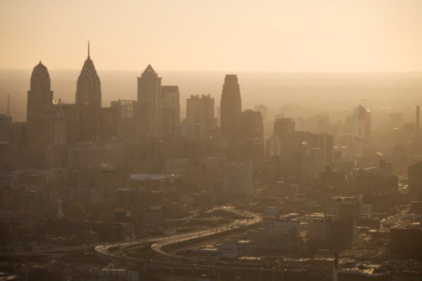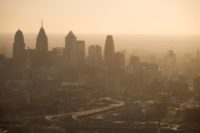What you should know about ozone

 Ozone is a gas that you cannot see or smell. Ozone occurs naturally in the sky about 10 to 30 miles above the earth's surface. Sometimes, this ozone is called "good ozone" because it forms a layer that protects life on earth from the sun's harmful rays.
Ozone is a gas that you cannot see or smell. Ozone occurs naturally in the sky about 10 to 30 miles above the earth's surface. Sometimes, this ozone is called "good ozone" because it forms a layer that protects life on earth from the sun's harmful rays.
Ground-level ozone, on the other hand, can be bad for your health and the environment. Ground-level ozone forms when pollutants from cars and trucks, power plants, factories, and other sources come in contact with each other in heat and sunlight. Factors such as weather conditions and intensity of sunlight also play a part in how ozone is formed. Ground-level ozone is one of the biggest parts of smog, and it is usually worse in the summer months.
Many urban areas tend to have higher levels of ground-level ozone. However, rural areas have ground-level ozone, too. Wind carries ozone and the pollutants that form it hundreds of miles from their original sources, and rural areas have sources of ozone that contribute to this problem.
Ozone and health
When ozone levels are very high, everyone should be concerned about ozone exposure. But ozone bothers some people more than others, mainly when they are outside. People in these groups may feel the effects of ozone when they are outside for short periods of time, even if they are only doing light activities. Those most likely to be bothered by ozone include
- people with asthma or lung disease because they will feel the effects of ozone sooner and at lower ozone levels than less-sensitive people.
- children who spend a lot of time outdoors. Children are also more likely than adults to have asthma, which may be aggravated when they breathe in ozone. Being exposed to ozone for short periods of time over many years may cause children to have more breathing problems as adults.
- older adults because they are more likely to have heart or lung disease.
- active people of all ages who exercise or work hard outside because they are in contact with ozone more than people who spend more time indoors.
- infants because their lungs continue to develop after birth and can be impacted by air pollutants.
- Many scientific studies have linked ground-level ozone contact to such varied problems as
- aggravation of asthma, bronchitis, and emphysema
- coughing and pain when taking a deep breath;
- higher chance of getting respiratory illness such as pneumonia or bronchitis;
- lung and throat irritation; and
- wheezing and breathing difficulties during exercise or outdoor activities.
As a result of these studies, scientists know that breathing in too much ozone can increase events such as
- use of asthma medication,
- absences from school,
- visits to the emergency room and hospital admissions, and
- premature death from heart and lung disease.
Protect yourself and your family
EPA's Air Quality Index, or AQI, is a tool to help you quickly learn when air pollution is likely to reach unhealthy levels. Local TV stations, radio programs, and newspapers carry these air qualityforecasts to tell you when particle levels are likely to be unhealthy. You can use the AQI to plan your daily activities to reduce exposure to ozone.
Your exposure to ozone depends mainly on where you live and work and how much time you spend outside. When ozone levels are high, you can
- reduce the amount of time you spend outside;
- plan outdoor activities when ozone levels are lower, usually in the morning and evening;
- do easier outdoor activities, such as walking instead of running; and
- plan indoor activities.
Source: CDC
Looking for a reprint of this article?
From high-res PDFs to custom plaques, order your copy today!






